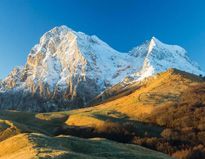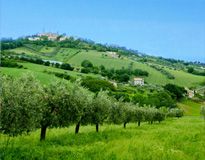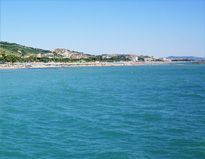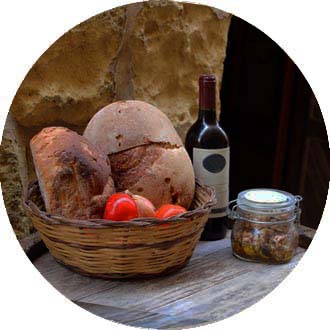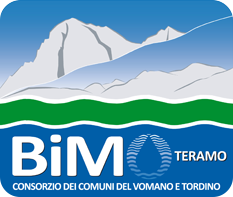Isola del Gran Sasso is located in the heart of the Sicilian Valley, on the slopes of the Gran Sasso d'Italia and on the banks of the river Ruzzo. Together with its whole area it is included in the Gran Sasso and Monti della Laga National Park, but, contrary to what it suggests, it is easily reachable by car as it is served by the A24 motorway, also known as the Strada dei Parchi, which at Isola's height there is a dedicated exit (San Gabriele-Colledara) also to meet the needs of the faithful visiting the famous Sanctuary.
Precisely because of its geographical location it sees the presence of many animal and plant species, such as the wolf, the Abruzzo chamois, the deer, the golden eagle, the buzzard, the eagle owl, the squirrel, the fox, the boar and the magpie and in general can boast an extreme biodiversity.
Another feature of Isola is the high number of hamlets and districts that make it up, some even relatively populous, such as Cerchiara. Both from the capital and especially from some of its hamlets you can enjoy an enchanting view of the highest peaks of the Apennines, in particular the Pareto of the Corno Grande, Monte Aquila, Monte Brancastello, Monte Prena and Monte Camicia.
Isola del Gran Sasso and its territory have been inhabited for many centuries and even the first traces of housing and associated life date back to the Neolithic period. However, the first certain news of Isola as such and with this toponym are from the XI century and exactly in 1063 when Adalberto donated to the Church of Santa Maria di Teramo the part of his property of the Castello de la Isola.
In 1120, the then bishop of Aprutino Berardo subdued Insula to the feudal regime of Enrico and Matteo conti d'Aprutinium in order to found a defensive outpost for the aforementioned church located in Teramo. A historical fact of the highest importance occurred in 1215 when San Francesco of Assisi arrived in Isola, where, at the point where today stands the famous Sanctuary of San Gabriele, he decided to set up a convent for his friars who remained there until half Nineteenth century, when they were replaced by the Passionist Fathers.
Almost at the end of the medieval period and precisely in 1419 were written the Statutes of the University of the Island, the oldest to date in the province of Teramo and the only documents to be written in the vernacular. Also in 1419 Isola was donated to Francesco Riccardi of Ortona and shortly thereafter to Antonello Petrucci, only to return to the availability of the powerful Orsini family following the so-called "Conspiracy of the Barons" of 1486, a real armed uprising that the epicenter in Montorio al Vomano against some new taxes decided by Alfonso d'Aragona and spread also to other areas.
A crucial period of the village was undoubtedly the first sixteenth century when, in 1526, the Emperor Charles V granted the entire Sicilian Valley to the family of Alarcon y Mendoza in the person of Ferdinando, distinguished in the battle of Pavia of the year before, and became therefore first Marquess of the Valley. The Spanish dominion over the whole area was broken by the "eversion" of the feudal order of the early nineteenth century due to the Bonaparte reforms.
As a result of this real revolution, the Agricultural Universities were supplanted by the modern Municipalities and Isola del Gran Sasso incorporated the hamlets and the districts of Casale San Nicola, Fano a Corno, Cerchiara, Varano, Forca di Valle, Cesa di Francia, San Gabriele, Pacciano, Frisoni, Collalto, Trignano, San Giovanni, Tembrietta, Capsano, Colliberti, San Massimo, Pretara, Ceriseto, San Pietro and Villa Piano.
In 1860-'61 of course, also Isola was affected by the events related to the Unification of Italy and was followed by tensions due to the phenomenon of post-unit brigandage. Finally, in 1863, the Municipality officially assumed the name of Isola del Gran Sasso d'Italia.
- Borgata S. Leonardo
- Borgo Pagliara Vecchia
- Borgo San Leonardo
- Campo di Giove
- Capsano
- Casale San Nicola
- Cerchiara
- Ceriseto
- Cesa di Francia
- Collalto-Frisoni
- Colliberti
- Fano a Corno
- Forca di Valle
- Isola del Gran Sasso (City)
- Pratuccia
- Pretara
- San Gabriele
- San Giovanni
- San Leonardo
- San Massimo
- San Pietro
- Santone
- Trignano
- Villa Piano
By Car
- From Rome: A24 towards Teramo, exit at S. Gabriele-Colledara and follow the signs for the sanctuary of San Gabriele dell'Addolorata continuing to Isola.
- From Bologna: A14 southbound, exit at Teramo-Giulianova-Mosciano Sant'Angelo tollbooth, take the expressway c.d. Teramo-Mare towards Teramo and continue on the A24 towards L'Aquila-Rome and exit at the San Gabriele - Colledara tollgate and continue towards Isola.
- From Bari: A14 northbound, exit at the tollgate of Roseto degli Abruzzi, take the state road 150 towards Teramo-Villa Vomano. After about 15 km take the A24 towards Rome - L'Aquila, exit at S. Gabriele-Colledara and continue towards Isola del Gran Sasso.
 en
en 


